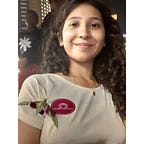Blood Processing
What is blood?
Blood is a body fluid that transports oxygen and nutrients to the cells and carries away carbon dioxide and other waste products away from those same cells. About 7–8% of your total body weight is blood.
What are the components of blood?
Blood is an opaque red coloured fluid that flows freely but is denser and more viscous than water.
Blood is made up of liquids and solids. The liquid part is called plasma and is made up of water, salts, and protein. A substantial part of blood contains RBCs, WBCs, and platelets.
Plasma: Carriers nutrients, hormones, and proteins to different parts of the body. About 55% of the blood consists of plasma.
RBCs: Delivers oxygen from lungs to tissues and organs.
WBCs: Fights infection and are a part of your immune system.
Platelets: Helps blood to clot when you have a cut or wound.
The other 45% of blood is made up of blood cells.
What do you mean by blood processing?
After blood donation from healthy or non-healthy patients for study or research purposes, the blood is separated into its components for further analysis. This is known as blood processing and can be achieved using the centrifugation technique.
Separating Plasma from Whole Blood
Plasma is the liquid portion of the blood and is yellowish in colour.
Steps:
- Collect whole blood in a covered test tube. e.g., EDTA-treated (lavender tops) or citrate-treated (light blue tops). Heparinized tubes (green tops) are indicated for some applications.
- Draw 12 mL of Whole Blood for each 5 mL of plasma.
- Centrifuge for at least 15 minutes at 2200–2500 rpm.
- Pipette out plasma into a clean plastic screw-cap vial.
What is Plasma used for?
Plasma is used to treat people suffering from medical emergencies. Injuries sustained from accidents, such as burns, trauma, and shock, are treated with plasma. It is also used to treat chronic conditions like hemophilia and some autoimmune disorders.
Separating Serum from Whole Blood
Serum is the liquid fraction of whole blood that is collected after the blood is allowed to clot. The clot is removed by centrifugation, and the resulting supernatant, designated serum, is carefully removed using a Pasteur pipette.
Steps:
- Perform venipuncture as with any other blood collection device.
- Invert the tube gently no more than eight times. Further inversion may cause alterations in sample integrity.
- Do not remove the stopper at any time. Do not centrifuge immediately after drawing blood. Allow the blood to clot in an upright position for at least 30 minutes but not longer than 1 hour before centrifugation.
- Centrifuge for at least 15 minutes at 2200–2500 rpm within one hour of collection.
- Transfer the serum to a plastic screw-cap vial for transport to the laboratory.
What is Serum used for?
Serum includes antibodies, antigens, electrolytes, hormones, and exogenous substances such as drugs and microorganisms and all proteins except those used in blood clotting. Thus it has applications not only in the field of clinical diagnostics but also in research. An elementary example could be their use in the different types of ELISA tests. Therefore, they are used to detect a particular antibody, antigen, hormone, exogenous substances, etc.
